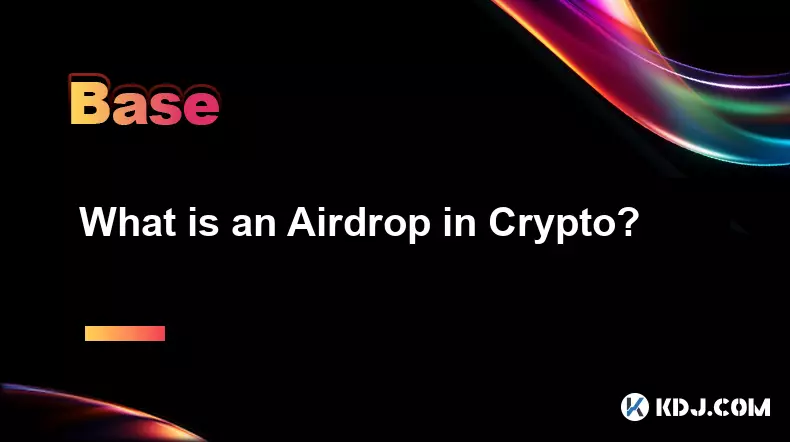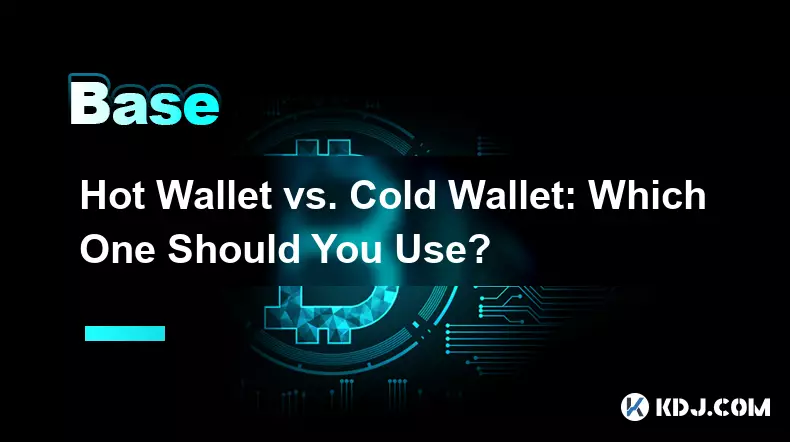-
 Bitcoin
Bitcoin $110200
-0.44% -
 Ethereum
Ethereum $4278
-0.32% -
 Tether USDt
Tether USDt $1.000
0.00% -
 XRP
XRP $2.802
-0.45% -
 BNB
BNB $859.6
1.16% -
 Solana
Solana $201.3
-0.88% -
 USDC
USDC $0.9999
0.00% -
 Dogecoin
Dogecoin $0.2145
-0.21% -
 TRON
TRON $0.3269
-1.34% -
 Cardano
Cardano $0.8214
-0.33% -
 Hyperliquid
Hyperliquid $46.01
-1.10% -
 Chainlink
Chainlink $22.12
-0.15% -
 Ethena USDe
Ethena USDe $1.001
0.00% -
 Sui
Sui $3.341
-1.34% -
 Bitcoin Cash
Bitcoin Cash $596.5
-2.52% -
 Stellar
Stellar $0.3559
-0.58% -
 Avalanche
Avalanche $24.55
0.88% -
 Hedera
Hedera $0.2151
-0.64% -
 Cronos
Cronos $0.2680
0.15% -
 UNUS SED LEO
UNUS SED LEO $9.574
0.49% -
 Litecoin
Litecoin $112.1
-0.30% -
 Toncoin
Toncoin $3.053
-1.10% -
 Shiba Inu
Shiba Inu $0.00001225
-0.67% -
 Polkadot
Polkadot $3.804
-0.30% -
 Uniswap
Uniswap $9.314
-0.44% -
 Dai
Dai $0.9998
0.00% -
 Ethena
Ethena $0.7359
11.31% -
 Monero
Monero $266.0
-0.37% -
 World Liberty Financial
World Liberty Financial $0.1975
8.19% -
 Aave
Aave $299.5
-0.96%
What is a crypto lending and borrowing platform?
Crypto lending platforms let users earn passive income by lending digital assets, with interest rates driven by supply and demand, but risks like market volatility and platform insolvency remain.
Sep 03, 2025 at 09:36 am

Understanding Crypto Lending and Borrowing Platforms
1. A crypto lending and borrowing platform is a digital service that enables users to lend their cryptocurrency assets to others in exchange for interest. These platforms operate through smart contracts or centralized mechanisms to facilitate transactions between lenders and borrowers. The core idea is to unlock liquidity from dormant crypto holdings by allowing them to generate passive income.
2. Borrowers on these platforms typically provide collateral in the form of cryptocurrency to secure a loan. This collateralization helps mitigate default risks, as most platforms require over-collateralization—meaning the value of the collateral exceeds the loan amount. For example, a borrower might need to deposit $1,500 worth of Bitcoin to borrow $1,000 in stablecoins.
3. Interest rates on lending platforms are often determined by supply and demand dynamics. When demand for borrowing a specific cryptocurrency rises, interest rates for lenders increase. Conversely, if many users are lending but few are borrowing, rates may drop. This market-driven model allows for dynamic yield generation.
4. These platforms support a wide range of cryptocurrencies, including Bitcoin, Ethereum, and various stablecoins like USDT and DAI. Some platforms specialize in decentralized finance (DeFi) protocols, where users interact directly with blockchain-based smart contracts without intermediaries.
5. Centralized platforms such as Celsius (prior to its collapse) and Nexo offer user-friendly interfaces and additional features like instant withdrawals and insurance on deposits. However, they require users to trust the platform with custody of their assets, introducing counterparty risk.
How Crypto Lending Generates Passive Income
1. Users who hold large amounts of cryptocurrency but do not actively trade can use lending platforms to earn consistent returns. By depositing their assets into a lending pool, they become liquidity providers and receive interest payments, often paid out daily or weekly.
2. The interest is typically denominated in the same cryptocurrency deposited or in a stablecoin, reducing exposure to price volatility. Annual percentage yields (APYs) can range from 3% to over 10%, depending on the asset and platform.
3. Some platforms offer tiered interest rates based on the amount deposited or the duration of the loan. Long-term deposits may yield higher returns, incentivizing users to lock in their funds for extended periods.
4. Automated compounding features are available on certain platforms, allowing earned interest to be reinvested automatically, accelerating wealth accumulation over time.
5. This model transforms static crypto holdings into income-generating assets, making it a popular strategy among long-term investors.
Risks Associated with Crypto Lending Platforms
1. Smart contract vulnerabilities pose a significant threat, especially in decentralized platforms. Bugs or exploits in the underlying code can lead to loss of funds, as seen in several high-profile DeFi hacks.
2. Market volatility affects collateral values. If the price of the collateral asset drops sharply, borrowers may face liquidation, and lenders could be exposed to losses if the platform fails to manage risk properly.
3. Regulatory uncertainty remains a challenge. Governments around the world are still developing frameworks for crypto lending, and sudden regulatory actions can disrupt platform operations or freeze assets.
4. Centralized platforms carry custodial risk—if the company mismanages funds or goes bankrupt, user deposits may not be recoverable. The collapse of platforms like Celsius and Voyager Digital serves as a cautionary example.
5. Liquidity risk can emerge during market downturns when platforms restrict withdrawals to prevent insolvency, leaving users unable to access their funds when needed.
The Role of Collateral in Crypto Loans
1. Collateral is the foundation of crypto borrowing, ensuring that lenders are protected against default. Most platforms require collateral ratios between 125% and 200%, depending on the asset’s volatility.
2. When a borrower deposits collateral, it is held in a wallet or smart contract until the loan is repaid. During this time, the borrower cannot access or trade the collateralized assets.
3. Automated liquidation mechanisms trigger if the collateral value falls below a certain threshold. The system sells part of the collateral to repay the loan, protecting lenders from losses.
4. Some platforms allow undercollateralized or uncollateralized loans through credit scoring systems or identity verification, though these are less common and carry higher risk.
5. The use of collateral enables trustless lending in decentralized environments, eliminating the need for traditional credit checks.
Frequently Asked Questions
What happens if the value of my collateral drops significantly?If the collateral value falls below the required threshold, the platform will issue a margin call. If the borrower fails to deposit more collateral, the system automatically liquidates part of the position to cover the loan balance.
Are my funds insured on crypto lending platforms?Some centralized platforms offer limited insurance on deposits, often covering custodial assets against hacks or theft. However, this coverage is not universal, and most DeFi platforms do not provide insurance, leaving users fully exposed to smart contract risks.
Can I withdraw my crypto at any time from a lending platform?Withdrawal policies vary. Some platforms allow instant withdrawals, while others impose lock-up periods or require advance notice. During periods of market stress, platforms may temporarily restrict withdrawals to maintain liquidity.
How are interest rates determined on these platforms?Interest rates are typically algorithmically adjusted based on real-time supply and demand. High borrowing demand increases rates for lenders, while excess supply lowers them. Some platforms offer fixed-rate options for predictable returns.
Disclaimer:info@kdj.com
The information provided is not trading advice. kdj.com does not assume any responsibility for any investments made based on the information provided in this article. Cryptocurrencies are highly volatile and it is highly recommended that you invest with caution after thorough research!
If you believe that the content used on this website infringes your copyright, please contact us immediately (info@kdj.com) and we will delete it promptly.
- Pepe Coin's Moon Potential Fading? Altcoins Like Remittix Steal the Show
- 2025-09-07 08:25:15
- Riding the Crypto Wave: WLFI Token Hype vs. ZA Miner's Cloud Mining Daily Profits
- 2025-09-07 08:45:13
- Meme Coins: 100x Forecasts and the 2025 Outlook – Are We There Yet?
- 2025-09-07 08:45:13
- Altcoin Leverage Alert: ENA & Market Data Show Risky Speculation
- 2025-09-07 08:50:12
- XRP, Bitcoin, and the Altcoin Market: A New Yorker's Take on the Crypto Scene
- 2025-09-07 10:30:12
- BlockDAG, Uniswap, and Chainlink: Decoding Whale Moves and Market Momentum
- 2025-09-07 08:55:12
Related knowledge

How Do Play-to-Earn (P2E) Games Work?
Sep 07,2025 at 10:54am
Understanding the Core Mechanics of Play-to-Earn Games1. Play-to-Earn (P2E) games operate on blockchain technology, allowing players to earn cryptocur...

What is Layer 1 and Layer 2 in Blockchain?
Sep 06,2025 at 10:00pm
The Evolution of Decentralized Exchanges in the Crypto Ecosystem1. Decentralized exchanges (DEXs) have reshaped how traders interact with digital asse...

What is an Airdrop in Crypto?
Sep 07,2025 at 03:36am
What is a Crypto Airdrop?1. A crypto airdrop refers to the distribution of free tokens or coins to wallet addresses within the blockchain ecosystem. T...

Hot Wallet vs. Cold Wallet: Which One Should You Use?
Sep 05,2025 at 06:19pm
Understanding Hot Wallets in the Cryptocurrency Ecosystem1. A hot wallet is a digital cryptocurrency wallet that remains connected to the internet at ...

What is "backtesting" a crypto trading strategy?
Sep 03,2025 at 10:55am
Understanding Backtesting in Crypto TradingBacktesting is the process of evaluating a trading strategy by applying it to historical market data. Trade...

What is a "crypto trading bot" and do they work?
Sep 02,2025 at 04:19pm
Understanding Crypto Trading Bots1. A crypto trading bot is a software application designed to automate the process of buying and selling cryptocurren...

How Do Play-to-Earn (P2E) Games Work?
Sep 07,2025 at 10:54am
Understanding the Core Mechanics of Play-to-Earn Games1. Play-to-Earn (P2E) games operate on blockchain technology, allowing players to earn cryptocur...

What is Layer 1 and Layer 2 in Blockchain?
Sep 06,2025 at 10:00pm
The Evolution of Decentralized Exchanges in the Crypto Ecosystem1. Decentralized exchanges (DEXs) have reshaped how traders interact with digital asse...

What is an Airdrop in Crypto?
Sep 07,2025 at 03:36am
What is a Crypto Airdrop?1. A crypto airdrop refers to the distribution of free tokens or coins to wallet addresses within the blockchain ecosystem. T...

Hot Wallet vs. Cold Wallet: Which One Should You Use?
Sep 05,2025 at 06:19pm
Understanding Hot Wallets in the Cryptocurrency Ecosystem1. A hot wallet is a digital cryptocurrency wallet that remains connected to the internet at ...

What is "backtesting" a crypto trading strategy?
Sep 03,2025 at 10:55am
Understanding Backtesting in Crypto TradingBacktesting is the process of evaluating a trading strategy by applying it to historical market data. Trade...

What is a "crypto trading bot" and do they work?
Sep 02,2025 at 04:19pm
Understanding Crypto Trading Bots1. A crypto trading bot is a software application designed to automate the process of buying and selling cryptocurren...
See all articles





















![Daily Level for 9/7/2025: Momentum by EnenzoGD (WITH COIN) [GD Daily Video #809] Daily Level for 9/7/2025: Momentum by EnenzoGD (WITH COIN) [GD Daily Video #809]](/uploads/2025/09/07/cryptocurrencies-news/videos/daily-level-momentum-enenzogd-coin-gd-daily-video/68bcd9494f8d8_image_120_90.webp)


































































